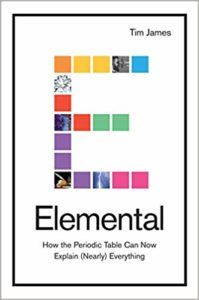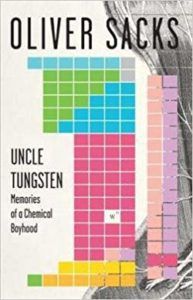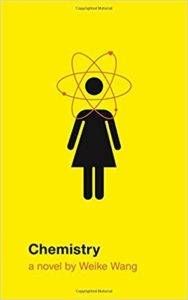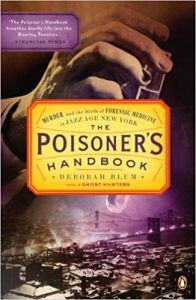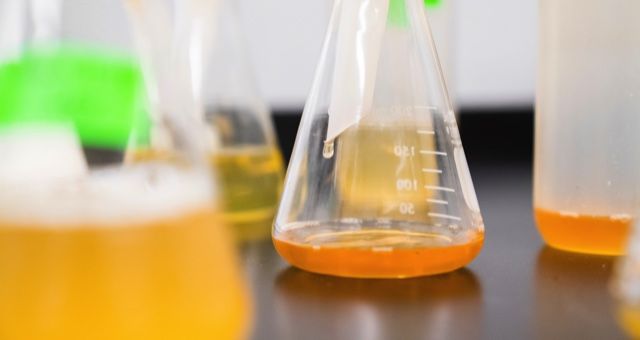
6 Chemistry Books for Mole Day
Happy Mole Day, the day we celebrate Avogadro’s number: 6.02 x 10^23. This number represents a mole, which is a basic unit of measurement in chemistry. Much like Pi Day for mathematics, Mole Day is an opportunity to celebrate and encourage widespread interest in chemistry. In that spirit, I’ve put together these recommendations for books about chemistry that span various genres and topics so that readers of all types can find an approach to the science that best suits them.
If you’re interested in…
…a general overview:
 Elemental: How the Periodic Table Can Now Explain (Nearly) Everything by Tim James
Elemental: How the Periodic Table Can Now Explain (Nearly) Everything by Tim James
Elemental is a fun, digestible overview of the history of the periodic table of elements and the development of the study of modern chemistry. The book is divided into short chapters centered around interesting anecdotes and facts, and avoids getting bogged down in complex, jargon-filled details. This very accessible structure, combined with a wonderful lightheartedness and a splash of dry humor (which had me chuckling on many occasions) is sure to keep readers at all levels of science knowledge entertained and absorbed.
…a memoir:
 Uncle Tungsten: Memoirs of a Chemical Boyhood by Oliver Sacks
Uncle Tungsten: Memoirs of a Chemical Boyhood by Oliver Sacks
Oliver Sacks was a neurologist and prolific author, known for his books that explored the interesting cases of his patients and himself. This memoir gives us a look at how he grew up to be the incredible scientist we remember him as. Sacks introduces readers to himself as a young boy, telling an interconnected story of his own childhood and the history of chemistry. We learn more and more about the science alongside the young Sacks, and see his passion fueled as he performs his own experiments and develops a scientific literacy.
…fiction:
 Chemistry by Weike Wang
Chemistry by Weike Wang
A graduate student following what seemed to be a very clear life path suddenly finds herself lost after years of failed research and a proposal from her boyfriend, a fellow chemist whose career has been much more successful. This novel explores her struggle as she withdraws from her previous life in order to try to figure out what she truly wants. The book does a wonderful job of examining the pressures of being a woman in science and a child of Chinese immigrants. Our unnamed heroine is very much defined by these identities—her voice makes it clear that her way of thinking is built upon scientific principles and Chinese tradition—but is, at the same time, being smothered by them. Wang writes with concise, objective prose and a lot of cleverness—very much using the voice of a scientist—making it both a unique and easy read.
…women in STEM:
 Marie Curie and Her Daughters: The Private Lives of Science’s First Family by Shelley Emling
Marie Curie and Her Daughters: The Private Lives of Science’s First Family by Shelley Emling
As mentioned in the prologue of this book, most biographies of Marie Curie don’t delve much beyond her second Nobel Prize. In Marie Curie and Her Daughters, however, we pick up where others leave off, in 1911, when Curie was awarded the Nobel in chemistry. Emling sheds light on Curie’s later life, as well as the lives of her two daughters, Irene and Eve, as they navigate a man’s world together with strength, resilience, and love for each other.
…true crime:
 The Poisoner’s Handbook: Murder and the Birth of Forensic Medicine in Jazz Age New York by Deborah Blum
The Poisoner’s Handbook: Murder and the Birth of Forensic Medicine in Jazz Age New York by Deborah Blum
In the early 1900s, record numbers of murderers were getting away with their crimes due to unreliable and incompetent coroners, as well as the supposed untraceability of poison, which was rising in popularity as a weapon at the time. Each chapter of this book focuses on a different poisonous chemical, the cases that involved them, and the steps taken toward developing the systems and science that would finally help bring criminals to justice. The Poisoner’s Handbook is a perfectly compelling blend of true crime mystery, science, and history, and would appeal to a wide variety of readers.
…a cookbook:
 The Food Lab: Better Home Cooking Through Science by J. Kenji López-Alt
The Food Lab: Better Home Cooking Through Science by J. Kenji López-Alt
If you’ve ever wondered how to make the perfect pancake, or burger, or anything else your stomach desires, this is the book for you! In this doorstopper of a cookbook, López-Alt examines food from a molecular level and uses the scientific method to come up with foolproof methods of cooking that will give you the results you want each and every time. Filled with hundreds of recipes using simple yet unconventional techniques, cooks (and scientists) of any experience level will be able to get a lot out of this book.
And if after all these you’ve still got an appetite for more science-y goodness, check out this list of 50 Must-Read Books on Nature and Science!



